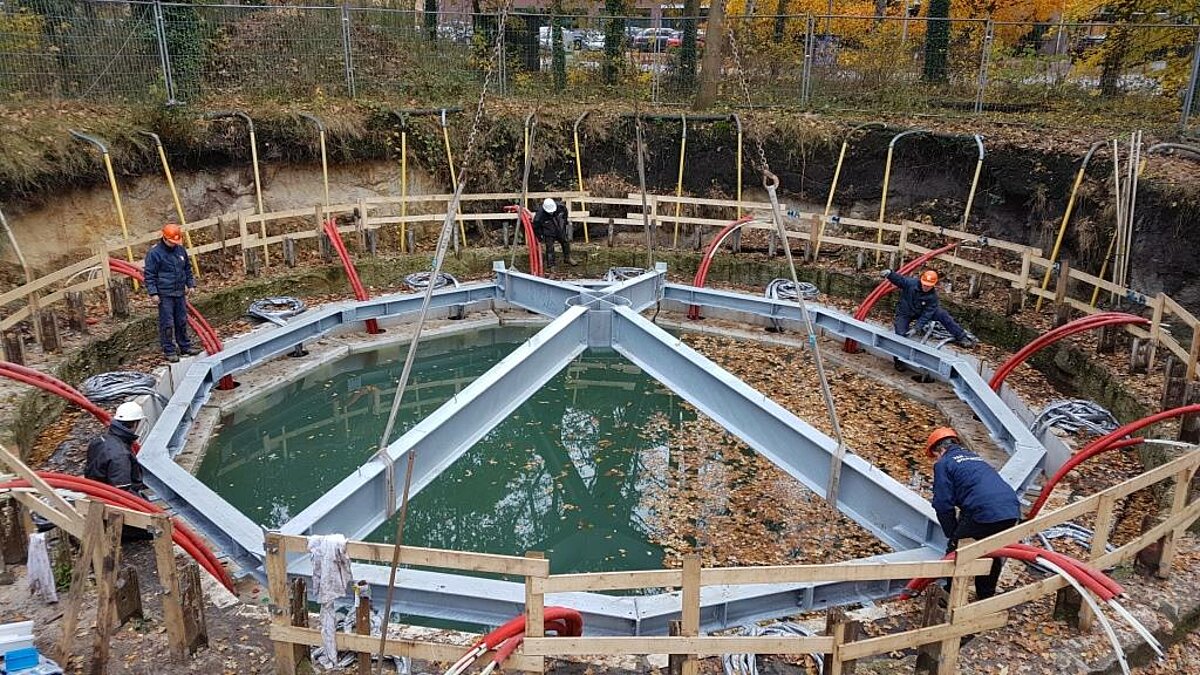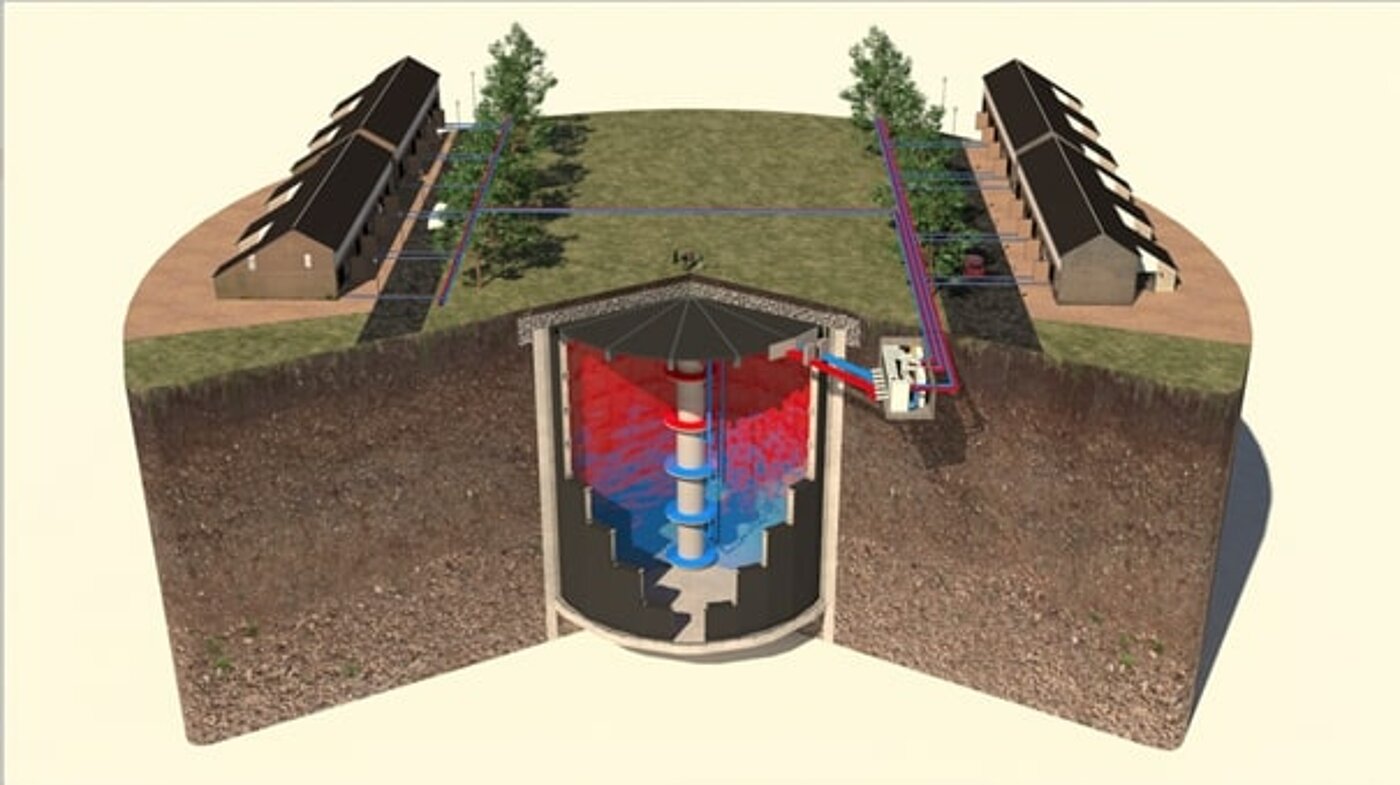12 October 2020
DSM and Lightyear aim to design solar roofs for all types of electric vehicles
- Mobility
Ecovat has designed a system where a supersized tank can store hot water underground. “In conjunction with sustainable systems for generating energy such as solar thermal panels and a heat pump powered by wind energy, the Ecovat system is able to heat thousands of homes without any CO2 emissions in winter. And can cool these down in summer too,” says founder Aris de Groot.

“In 2011 I looked into how you could make buildings more energy efficient on behalf of a client. It turned out that 80% of the average energy bill is spent on heat, most of which you use in winter. Whereas it’s mainly in summer when you can generate plenty of sustainable energy, as is the case with thermal panels. Even though you don’t actually need that heat right then. That’s when I started thinking about a way to store the heat that you generate in the summer so that you can use it in the winter.
“So I came up with the idea of making a huge underground tank which you can fill up with water up to 95 °C. In order to store that heat, the tank is insulated with foam glass, a thick layer of glass with a structure that looks like the inside of a Bros chocolate bar. The underground tank is 33 meters in diameter and holds 20,000 cubic meters of water. Because of its size retains the heat better than if it were in a smaller tank. The larger the tank, the slower the rate that the water cools down. And the cheaper the heat becomes. The water can be extracted at several levels from the tank. The warmest water is at the top of the tank. The coolest water is at the bottom. That can be used in summer for cooling homes.”

Het hot water tank of Ecovat is 30 meters deep and isolated with foam glass. Image: © Ecovat
The insulation material was developed in collaboration with the Eindhoven University of Technology in Eindhoven. That is 100% sustainable and capable of withstanding pressures of up to 6 bar. It’s built to last at least 50 years. We also had to develop software which could regulate the energy flows in the Ecovat system, e.g., for when a lot of sustainable energy is generated. Sometimes the heat pump, which is also part of the system, is challenging. Other times it was the thermal panels or the warm water coming from the Ecovat. The tricky thing is to make sure that the system is cost-effective and that all its functions are aligned properly with each other.
De Groot is optimistic about the future: “We sorted out all issues. In the upcoming year we start the construction of our first commercial Ecovat system for Mijnwater, an energy supplier in Heerlen. This will hold 20,000 cubic metres of heated water. It will be connected to the existing heat network and will heat 2000 extra homes belonging to three housing corporations. In five year we will build four Ecovat systems each year, with a turnover of about €60 million.”